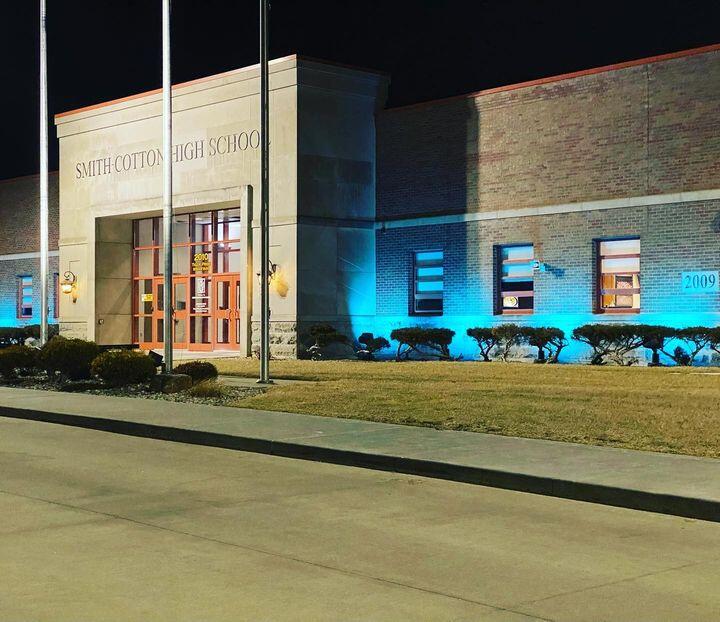This is a pleasant article for me to write, though it resurrects a reminder of unpleasant times. I hope readers will find the healing nature of what I now report uplifting. It all began with an unexpected email I received last month from Terri Ballard, former Executive Director of the Sedalia Ragtime Festival.
I must begin however, by expressing my profound appreciation to Andy Senior’s faithful publication of The Syncopated Times for allowing my monthly ramble. It rarely fails to bring a contact such as Terri’s and my life is thus vastly enriched by these communications.
Now what Terri had to report was totally unexpected and took me back to the spring of 1972 in Sedalia, Missouri, and the end of educational segregation there. I was a token white teacher in the mostly African-American Hubbard Elementary school. It had formerly been half of the Hubbard high school building that had replaced the earlier Lincoln School on the North Side.
Desegregation, mandated by the 1954 Brown v. Board of Education Supreme Court Decision had been ignored and postponed 18 years and was, by my estimation, finally poorly implemented. I was moved as an elementary teacher across town and my former African-American colleague teachers with our students were divided among the remaining White Elementary Schools. The Hubbard High School students had been previously relocated and bussed to the White Smith-Cotton-high School. By 1973 all African American students were bussed across town, Hubbard School was closed.
I stood in the foyer of my new school the first day of classes in 1973 as the bus from the North-side arrived and the former Hubbard students and three colleagues who joined them on the bus timidly entered the building. They spotted me and their other former Hubbard teacher standing in the foyer and several of the new arrivals ran to us with emotional hugs, relieved to see familiar faces in such a foreboding place. I was in tears and I had trouble explaining to my new Caucasian students why some of us were crying.

You see, the old Hubbard School and the beloved principal, Mrs. Dorothy Kitchen (TST, December 2019) who had trained under high school principal, C.C. Hubbard, were gone. The building had been the North-Side community’s center, community arts venue, recreation hall, and playground. Further, Mrs. Kitchen and the teachers were community leaders once, as Hubbard School the high school was the focus of the community and that history was all over at that moment. The building was destined to become the Lincoln-Hubbard Apartments as it exists today.
A Supreme Court decision to improve the inequality of education was to take much longer to impact community inequality
Now, about Terri Ballard’s hopeful email. She was informing me of an event during the 2022 Black History Month about which she thought I would be interested. It seems the Smith-Cotton High School Principal Mr. Wade Norton had spearheaded an effort to acknowledge the rich tradition of education in Sedalia going back to the days of the Lincoln-Hubbard Schools. He mustered a group of interested citizens and Friends of the Old Hubbard School and they implemented a project for Black History Month, 2022.
During the month of February, the high school building often lit with the modern school colors, Gold and Black, proudly boasted the old Hubbard School colors Blue and White. A handsome shirt was produced to commemorate the recognition and proceeds benefited the Hubbard Reunion Committee. The price is $22.00
I discovered an interesting historical footnote to the matter of the colors. It seems the old George R. Smith College (1895-1924) where Scott Joplin once attended had colors called Dewey Blue and White and the athletes were known as the Dewey Tigers. I also found, thanks to a TST correspondent, Glenn Arthur Pierce, that the old Smith College mascot was a blue Tiger (as all African-American schools of higher education modeled after Booker T. Washington’s educational pedagogy had different colored tiger mascots. His Tuskegee mascot was the Golden Tiger.)

Since I left Sedalia in 1976, many local leaders have come from the African American community and the High School recognition of the former community school is a sign of two races embracing their shared past.
Sedalia, Missouri, is internationally recognized as the birthplace of ragtime’s syncopated music and American popular music. That is due to the genius of a Black composer, Scott Joplin, who gave the city an iconic brand. Thanks, Smith-Cotton.
Larry Melton was a founder of the Scott Joplin Ragtime Festival in 1974 and the Sedalia Ragtime Archive in 1976. He was a Sedalia Chamber of Commerce manager before moving on to Union, Missouri where he is currently helping to conserve the Ragtime collection of the Sedalia Heritage Foundation. Write him at lcmelton67@gmail.com.





